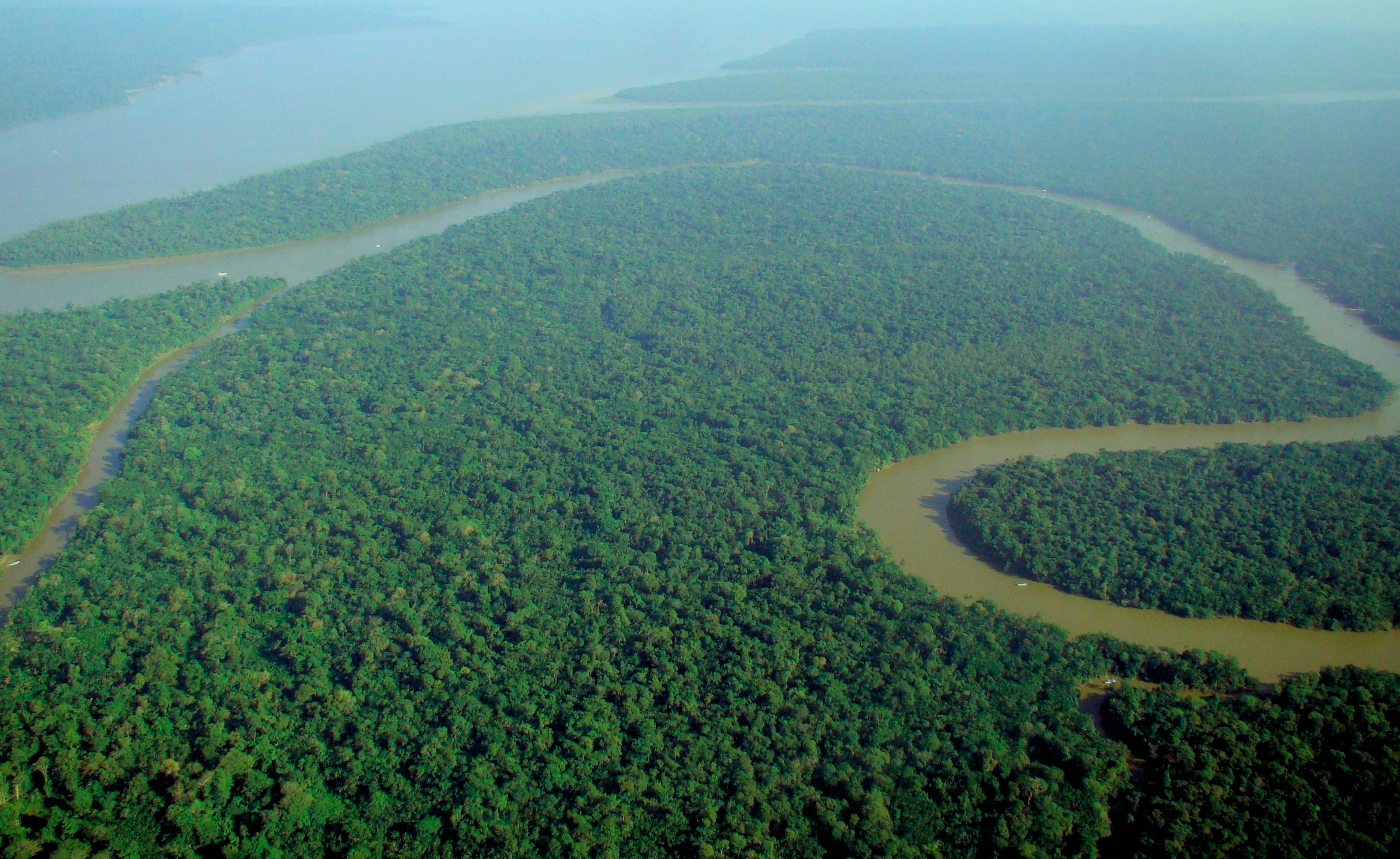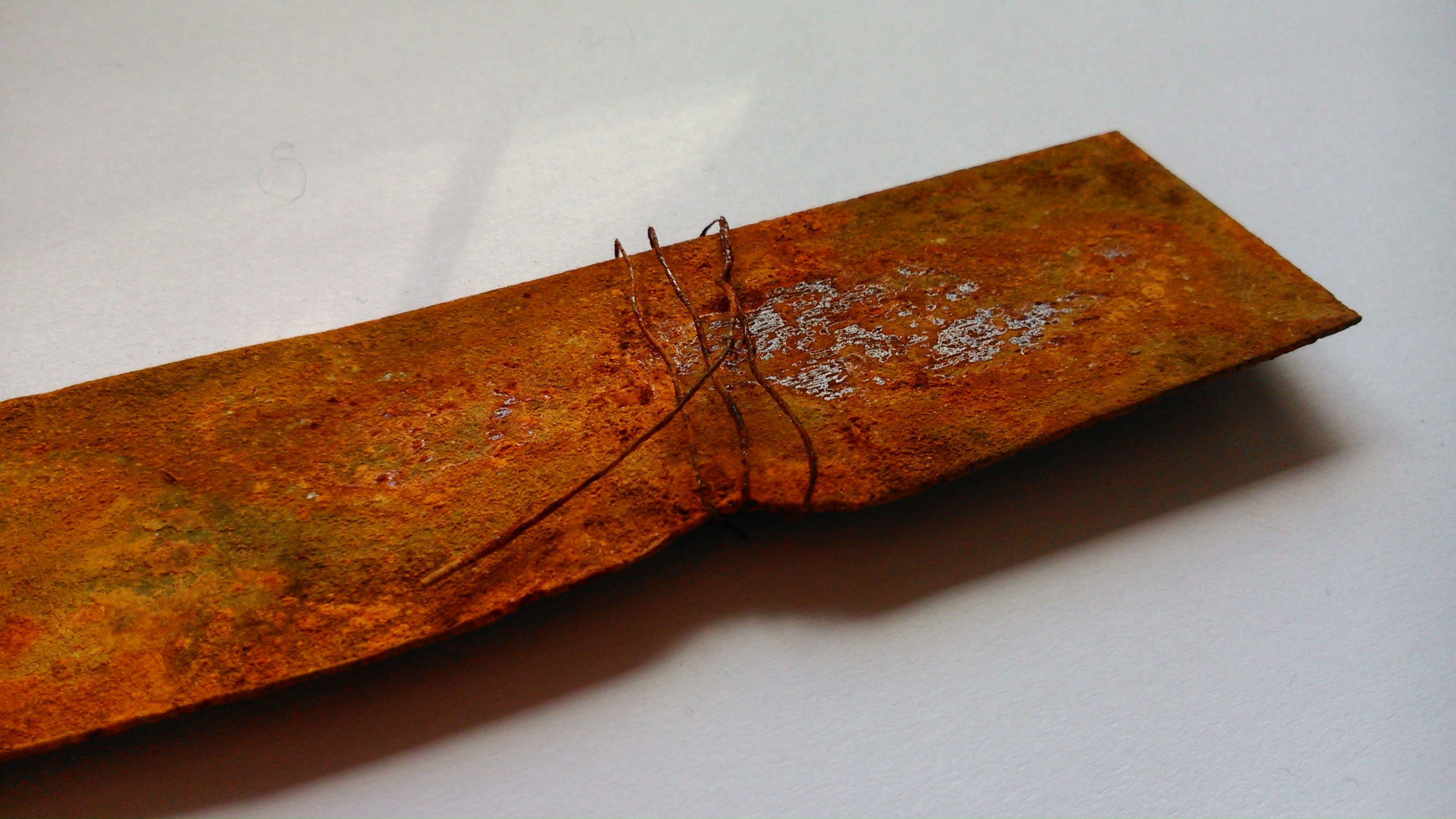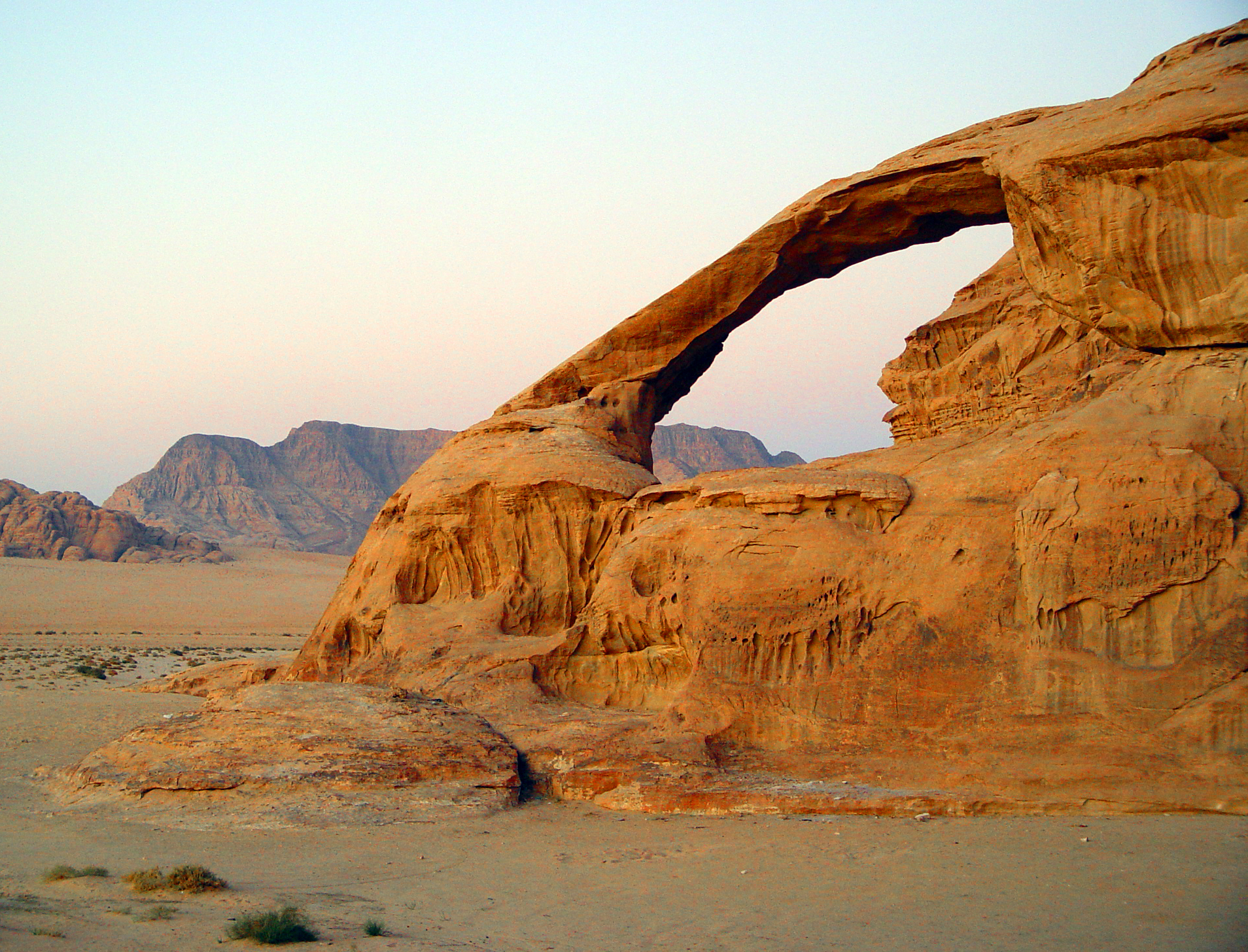|
Latosols
Latosols, also known as tropical red earth, are soils found under tropical rainforests which have a relatively high content of iron and aluminium oxides. They are typically classified as oxisols (USDA soil taxonomy) or ferralsols (World Reference Base for Soil Resources). Latosols are tropical soils, but not all soils in the tropics are latosolic. Latosols are red or yellowish-red in colour throughout and they do not have distinct horizons like a podsol. The red colour comes from the iron oxides in the soil. They are deep soils, often extending deep whereas podsols are deep. The soil generally contains a thin but very fertile layer of humus dropped from plants and animals in the forest above, followed by an infertile second layer due to rapid leaching caused by high rainfall. The third level, weathered bedrock, is common to almost all soil types. The latosol is completely reliant on the rainforest to maintain fertility, as all nutrients leach away quickly when the forest is fel ... [...More Info...] [...Related Items...] OR: [Wikipedia] [Google] [Baidu] [Amazon] |
Tropical Rainforest
Tropical rainforests are dense and warm rainforests with high rainfall typically found between 10° north and south of the Equator. They are a subset of the tropical forest biome that occurs roughly within the 28° latitudes (in the torrid zone between the Tropic of Cancer and Tropic of Capricorn). Tropical rainforests are a type of tropical moist broadleaf forest, that includes the more extensive seasonal tropical forests. True rainforests usually occur in tropical rainforest climates where no dry season occurs; all months have an average precipitation of at least . Seasonal tropical forests with tropical monsoon climate, tropical monsoon or tropical savanna climate, savanna climates are sometimes included in the broader definition. Tropical rainforests ecosystems are distinguished by their consistent, high temperatures, exceeding monthly, and substantial annual rainfall. The abundant rainfall results in nutrient-poor, leached soils, which profoundly affect the flora and fau ... [...More Info...] [...Related Items...] OR: [Wikipedia] [Google] [Baidu] [Amazon] |
Iron Oxide
An iron oxide is a chemical compound composed of iron and oxygen. Several iron oxides are recognized. Often they are non-stoichiometric. Ferric oxyhydroxides are a related class of compounds, perhaps the best known of which is rust. Iron oxides and oxyhydroxides are widespread in nature and play an important role in many geological and biological processes. They are used as iron ores, pigments, catalysts, and in thermite, and occur in hemoglobin. Iron oxides are inexpensive and durable pigments in paints, coatings and colored concretes. Colors commonly available are in the " earthy" end of the yellow/orange/red/brown/black range. When used as a food coloring, it has E number E172. Stoichiometries Iron oxides feature as ferrous ( Fe(II)) or ferric ( Fe(III)) or both. They adopt octahedral or tetrahedral coordination geometry. Only a few oxides are significant at the earth's surface, particularly wüstite, magnetite, and hematite. * Oxides of FeII ** FeO: ir ... [...More Info...] [...Related Items...] OR: [Wikipedia] [Google] [Baidu] [Amazon] |
Pedology
Pedology (from Greek: πέδον, ''pedon'', "soil"; and λόγος, ''logos'', "study") is a discipline within soil science which focuses on understanding and characterizing soil formation, evolution, and the theoretical frameworks for modeling soil bodies, often in the context of the natural environment. Pedology is often seen as one of two main branches of soil inquiry, the other being edaphology which is traditionally more agronomically oriented and focuses on how soil properties influence plant communities (natural or cultivated). In studying the fundamental phenomenology of soils, e.g. soil formation (aka pedogenesis), pedologists pay particular attention to observing soil morphology and the geographic distributions of soils, and the placement of soil bodies into larger temporal and spatial contexts. In so doing, pedologists develop systems of soil classification, soil maps, and theories for characterizing temporal and spatial interrelations among soils. There are a few ... [...More Info...] [...Related Items...] OR: [Wikipedia] [Google] [Baidu] [Amazon] |
Red Soil
Red soil is a type of soil that typically develops in warm, temperate, and humid climates and comprises approximately 13% of Earth's soils. It contains thin organic and organic-mineral layers of highly leached soil resting on a red layer of alluvium. Red soils contain large amounts of clay and are generally derived from the weathering of ancient crystalline and metamorphic rock. They are named after their rich red color, varying from reddish brown to reddish yellow due to their high iron content. Red soil can be good or poor growing soil depending on how it is managed. It is usually low in nutrients and humus and can be difficult to cultivate due to its low water holding capacity; however, the fertility of these soils can be optimized with liming and other farming techniques. Red soils are an important resource because they make up such a large portion of farmland on the earth. In countries such as China, India, and Greece, where there are large amounts of red soil, understandin ... [...More Info...] [...Related Items...] OR: [Wikipedia] [Google] [Baidu] [Amazon] |
Bedrock
In geology, bedrock is solid rock that lies under loose material ( regolith) within the crust of Earth or another terrestrial planet. Definition Bedrock is the solid rock that underlies looser surface material. An exposed portion of bedrock is often called an outcrop. The various kinds of broken and weathered rock material, such as soil and subsoil, that may overlie the bedrock are known as regolith. Engineering geology The surface of the bedrock beneath the soil cover (regolith) is also known as ''rockhead'' in engineering geology, and its identification by digging, drilling or geophysical methods is an important task in most civil engineering projects. Superficial deposits can be very thick, such that the bedrock lies hundreds of meters below the surface. Weathering of bedrock Exposed bedrock experiences weathering, which may be physical or chemical, and which alters the structure of the rock to leave it susceptible to erosion. Bedrock may also experience subsur ... [...More Info...] [...Related Items...] OR: [Wikipedia] [Google] [Baidu] [Amazon] |
Weathering
Weathering is the deterioration of rocks, soils and minerals (as well as wood and artificial materials) through contact with water, atmospheric gases, sunlight, and biological organisms. It occurs '' in situ'' (on-site, with little or no movement), and so is distinct from erosion, which involves the transport of rocks and minerals by agents such as water, ice, snow, wind, waves and gravity. Weathering processes are either physical or chemical. The former involves the breakdown of rocks and soils through such mechanical effects as heat, water, ice and wind. The latter covers reactions to water, atmospheric gases and biologically produced chemicals with rocks and soils. Water is the principal agent behind both kinds, though atmospheric oxygen and carbon dioxide and the activities of biological organisms are also important. Biological chemical weathering is also called biological weathering. The materials left after the rock breaks down combine with organic material to create so ... [...More Info...] [...Related Items...] OR: [Wikipedia] [Google] [Baidu] [Amazon] |
Leaching (pedology)
In pedology, leaching is the removal of soluble materials from one zone in soil to another via water movement in the profile. It is a mechanism of soil formation distinct from the soil forming process of eluviation, which is the loss of mineral and organic colloids. Leached and eluviated materials tend to be lost from topsoil and deposited in subsoil. A soil horizon accumulating leached and eluviated materials is referred to as a zone of illuviation. Laterite Laterite is a soil type rich in iron and aluminium and is commonly considered to have formed in hot and wet tropical areas. Nearly all laterites are of rusty-red coloration, because of high iron oxide content. They develop by intensive and prolo ... soil, which develops in regions with high temperature and heavy rainfall, is an example of this process in action. See also * Bioleaching * Biomineralisation * Dissolved load * Leaching (agriculture) * Groundwater recharge * Soil salinity control References {{reflist ... [...More Info...] [...Related Items...] OR: [Wikipedia] [Google] [Baidu] [Amazon] |
Humus
In classical soil science, humus is the dark organic matter in soil that is formed by the decomposition of plant and animal matter. It is a kind of soil organic matter. It is rich in nutrients and retains moisture in the soil. Humus is the Latin word for "earth" or "ground". In agriculture, "humus" sometimes also is used to describe mature or natural compost extracted from a woodland or other spontaneous source for use as a soil conditioner. It is also used to describe a topsoil horizon that contains organic matter (''humus type'', ''humus form'', or ''humus profile''). Humus has many nutrients that improve the health of soil, nitrogen being the most important. The ratio of carbon to nitrogen ( C:N) of humus commonly ranges between 8:1 and 15:1 with the median being about 12:1. It also significantly improves (decreases) the bulk density of soil. Humus is amorphous and lacks the cellular structure characteristic of organisms. The solid residue of sewage sludge treatment, w ... [...More Info...] [...Related Items...] OR: [Wikipedia] [Google] [Baidu] [Amazon] |
Podsol
Podzols, also known as podosols, spodosols, or espodossolos, are the typical soils of coniferous or Taiga, boreal forests and also the typical soils of eucalypt forests and heathlands in southern Australia. In Western Europe, podzols develop on heathland, which is often a construct of human interference through grazing and burning. In some British moorlands with podzolic soils, cambisols are preserved under Bronze Age barrows. Term Podzol means "under-ash" and is derived from the Russian language, Russian () + ('); the full form is ('), meaning "under-ashed soil". The term was first given in mid-1875 by Vasily Dokuchaev, and over time adopted by soil science. It refers to the common experience of Russia, Russian peasants of plowing up an apparent under-layer of ash (leached or Eluvium, E horizon) during first plowing of a virgin soil of that type. Characteristics Podzols can occur on almost any parent material but generally derive from either quartz-rich sands and sandston ... [...More Info...] [...Related Items...] OR: [Wikipedia] [Google] [Baidu] [Amazon] |
Iron Oxide
An iron oxide is a chemical compound composed of iron and oxygen. Several iron oxides are recognized. Often they are non-stoichiometric. Ferric oxyhydroxides are a related class of compounds, perhaps the best known of which is rust. Iron oxides and oxyhydroxides are widespread in nature and play an important role in many geological and biological processes. They are used as iron ores, pigments, catalysts, and in thermite, and occur in hemoglobin. Iron oxides are inexpensive and durable pigments in paints, coatings and colored concretes. Colors commonly available are in the " earthy" end of the yellow/orange/red/brown/black range. When used as a food coloring, it has E number E172. Stoichiometries Iron oxides feature as ferrous ( Fe(II)) or ferric ( Fe(III)) or both. They adopt octahedral or tetrahedral coordination geometry. Only a few oxides are significant at the earth's surface, particularly wüstite, magnetite, and hematite. * Oxides of FeII ** FeO: ir ... [...More Info...] [...Related Items...] OR: [Wikipedia] [Google] [Baidu] [Amazon] |
Soil Horizon
A soil horizon is a layer parallel to the soil surface whose physical, chemical and biological characteristics differ from the layers above and beneath. Horizons are defined in many cases by obvious physical features, mainly colour and texture. These may be described both in absolute terms (particle size distribution for texture, for instance) and in terms relative to the surrounding material, i.e. 'coarser' or 'sandier' than the horizons above and below. The identified horizons are indicated with symbols, which are mostly used in a hierarchical way. Master horizons (main horizons) are indicated by capital letters. Suffixes, in form of lowercase letters and figures, further differentiate the master horizons. There are many different systems of horizon symbols in the world. No one system is more correct—as artificial constructs, their utility lies in their ability to accurately describe local conditions in a consistent manner. Due to the different definitions of the horizon sym ... [...More Info...] [...Related Items...] OR: [Wikipedia] [Google] [Baidu] [Amazon] |
World Reference Base For Soil Resources
The World Reference Base for Soil Resources (WRB) is an international soil classification system for naming soils and creating legends for soil maps. The currently valid version is the fourth edition 2022. It is edited by a working group of the International Union of Soil Sciences (IUSS). WRB, 4th edition (2022) Background History Since the 19th century, several countries developed national soil classification systems. During the 20th century, the need for an international soil classification system became more and more obvious. From 1971 to 1981, the Food and Agriculture Organization (FAO) and UNESCO published the Soil Map of the World, 10 volumes, scale 1 : 5 M). The Legend for this map, published in 1974 under the leadership of Rudi Dudal, became the FAO soil classification. Many ideas from national soil classification systems were brought together in this worldwide-applicable system, among them the idea of diagnostic horizons as established in the '7th approximation ... [...More Info...] [...Related Items...] OR: [Wikipedia] [Google] [Baidu] [Amazon] |




